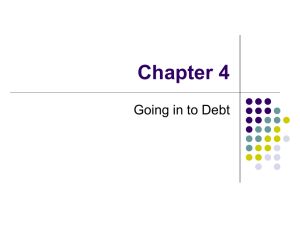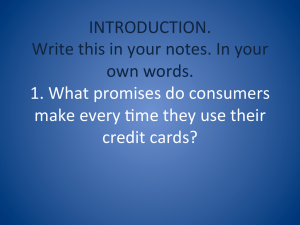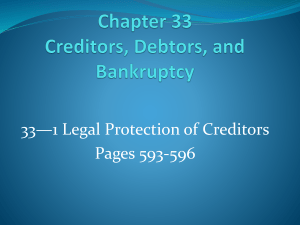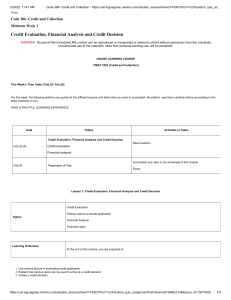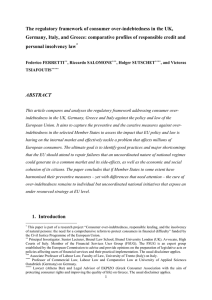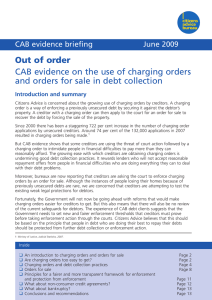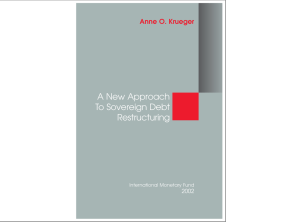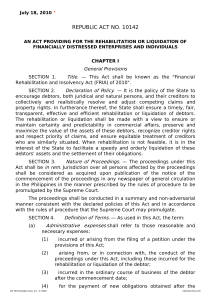CREDIT I N T R O D U C T I...
advertisement
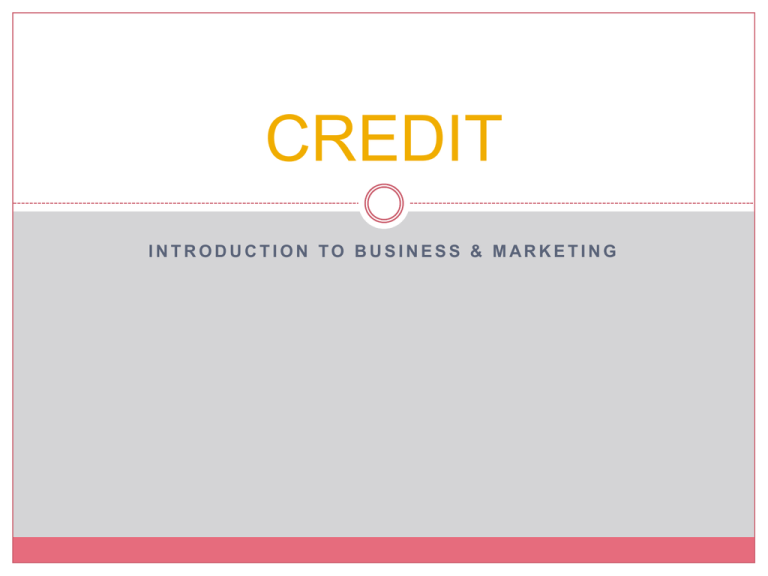
CREDIT INTRODUCTION TO BUSINESS & MARKETING Objectives Compare the types of consumer credit Describe the advantages and disadvantages of using credit Identify the elements of creditworthiness (3 C’s) Credit: Key Terms Credit – an agreement to obtain money, goods, or services NOW in exchange for a promise to pay LATER Creditor – lends money or provides credit Debtor – borrows money or uses credit Credit Credit is based on the creditor’s confidence that the debtor can and will repay the debt (creditworthiness). Interest – fee that creditors charge a debtor for using their money Types of Credit Types of Consumer Credit Charge Account credit provided by a store or company for customers to buy its products Types of Consumer Credit Credit Card – can be used in many different places Issued by banks (i.e., Bank of America Visa card) Some have annual fees ranging from $25 to $80 Creditors earn money from interest charges, annual fees, and penalties Types of Consumer Credit Installment Loans – loans repaid in regular equal payments over a period of time Includes student, car, and home improvement loans Debtor receives loan for a certain about of time (i.e., 60 month loan) Debtor makes equal monthly payments that cover loan plus interest Types of Consumer Credit Mortgage Loan – a form of installment loan, only it is written for a long period of time (15 – 30 years) Home serves as collateral, something of value the bank can take Types of Loans Short-term: one year or less Medium-term: one to five years Long-term: more than five years Pros & Cons of Using Credit Advantages of Using Credit Convenient Shop and travel without carrying large amounts of cash Buy expensive items (like cars) now and use right away Good for emergencies (i.e., unexpected car repairs) Establish Credit Rating A credit rating is a measure of a person’s ability and willingness to pay debts on time. Good ratings tell other lenders you are a responsible borrower and a good credit risk. Contribute to the Growth of Economy Consumers are able to buy more goods and services Businesses can hire more workers to produce more Disadvantages of Using Credit Easy to Misuse Tempting to buy things you cannot afford or don’t need Can be difficult to resist sales or offers for more credit Higher Cost Things cost more when using credit instead of cash because of the interest fees Committing Future Income Debt must be repaid Creditworthiness (3 C’s) WHEN YOU APPLY FOR CREDIT, CREDITORS WANT TO MAKE SURE YOU ARE WORTH THE RISK. 3 C’s: Capacity Capacity is the consumer’s ability to repay the loan. Creditors look for: Verified employment and income Ratio – current amount of debt compared to income Debt 3 C’s: Character Character is the consumer’s proven trustworthiness in repaying debts. Creditors will check: Credit references Credit report 3 C’s: Capital Capital is the amount of money the applicant has beyond their current debts. Creditors will check: Savings Investments Potential collateral
